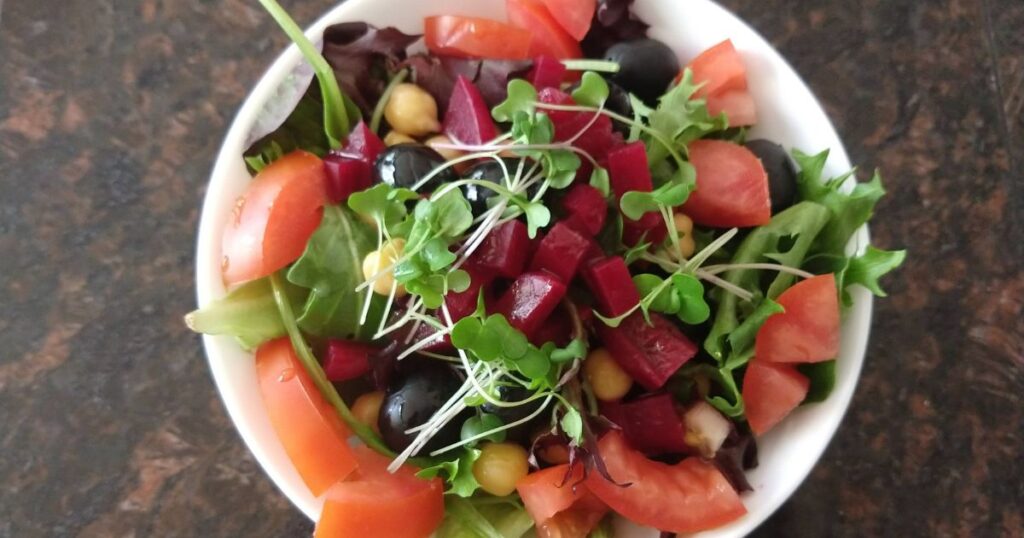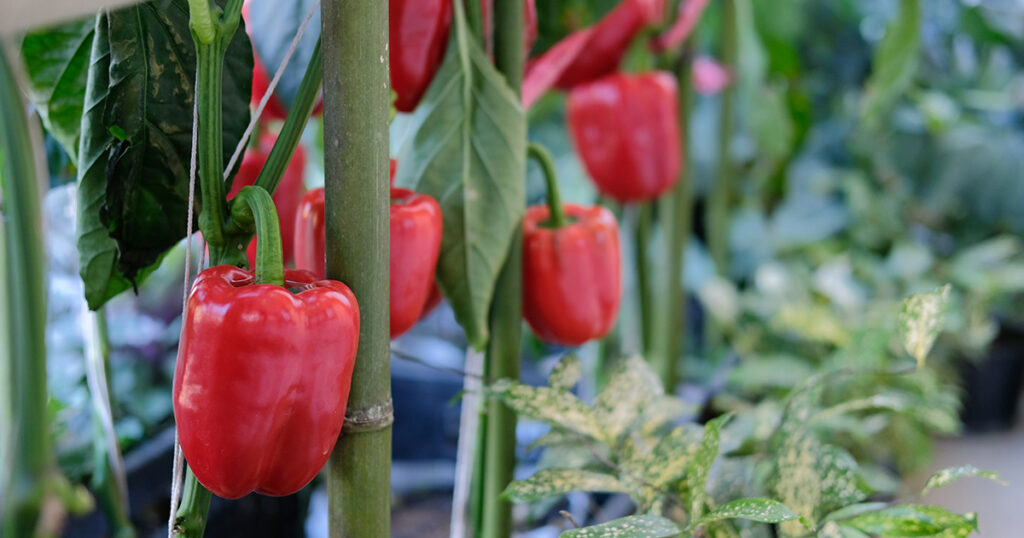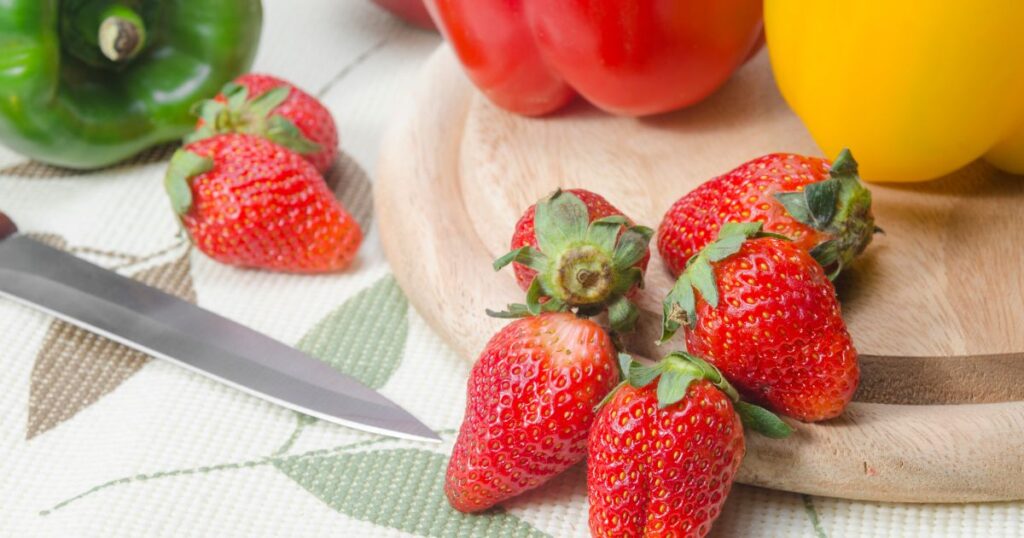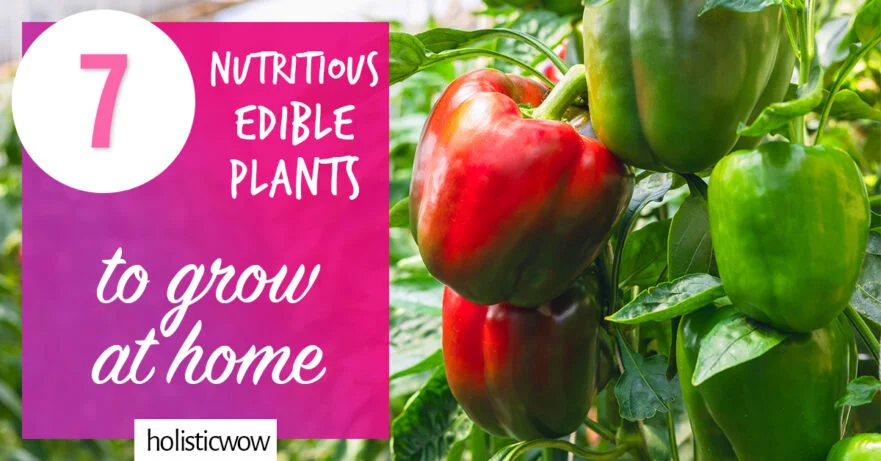Dive into the gardening world, a fulfilling pursuit suitable for everyone, young and old. It doesn’t take much space – even a small area or a few pots will do. Beyond the evident beauty, gardening brings many health benefits, acting as a form of therapy [1]. It’s a wallet-friendly way to tackle our increasingly sedentary lives while deepening our bond with the natural world [2]. Here, we’ll introduce seven plant superstars – easy-to-grow, nutritious, and ready to grace your home garden. These plants not only nourish but also infuse your table with the pride of home cultivation.
Key Takeaways
- Microgreens are nutrient-rich, quick-growing, and potentially aid mental health, suitable for small spaces [3][4].
- Rhubarb’s stalks are diuretic, antibacterial, and anti-inflammatory; they are used in diverse dishes and teas [5].
- Strawberries are Vitamin C-rich, low-sodium, and contribute to blood sugar control [6].
7 Nutritious Edible Plants to Grow at Home
Microgreens
Microgreens, these youthful edible plants, stand out for their vibrant colors and intense flavors. Harvested when their first leaves, cotyledons, unfurl [3], microgreens pack a nutritional punch. They can be grown anywhere, from basic gardens to advanced vertical farms with automated watering, fertilizing, and lighting. They’re ideal for novice home gardeners with quick growth and minimal space requirements [2][7].
Beyond taste, microgreens offer mental health benefits, potentially reducing depression. Surprisingly, these tiny plants intrigue even space exploration, as their distinct flavors and nutrients might enhance astronauts’ well-being [2][7].
Nutritionally, microgreens shine. Loaded with vitamins like C, vital minerals like copper and zinc, and potent compounds like carotenoids and phenolics, they double as antioxidants [3]. These attributes equip microgreens with anti-inflammatory, anti-diabetic, and antioxidant powers, suggesting a role in curbing chronic diseases [4].
Tomatoes
Tomatoes shine as versatile garden gems, offering a palette of colors and forms adored by home gardeners. Alongside classic red, they boast yellow, pink, and more, from petite cherries to substantial beefsteaks, each with unique contours [8]. Tomatoes require a minimum of 6 hours of sunlight, preferably in the morning, and protection from intense afternoon western sun and winds. They thrive in nutrient-rich, well-draining soil due to their high nutrient demands [9].
Beyond flavor, tomatoes are nutritional powerhouses. Packed with phytochemicals, lycopene, potassium, iron, folate, and vitamin C, they offer antioxidants like beta-carotene and phenolic compounds. Research hints at their potential for reducing cardiovascular risks linked to lower hypertension and atherosclerosis. With a low glycemic index, tomatoes suit even expectant mothers and people with insulin resistance. Further studies suggest skin health benefits [10].

Bell Pepper
The bell pepper, scientifically known as Capsicum annuum, is a versatile herbaceous plant that completes its lifecycle in four stages: seedling, vegetation, flowering, and fruiting. The bell pepper’s standout feature is its substantial, four-angled fruit, which varies in size (7–16 cm long, 6–11 cm wide, i.e., 2.76–6.30 inches long, 2.36–4.33 inches wide) and weight (from 100 to 500 g) [11]. With a preference for soil with a pH of 5.5-6.5, bell peppers exhibit adaptability to various soil types [12].
Although California is the top bell pepper producer in the United States, Florida takes the lead from October to June. Florida’s ideal conditions, including warm loamy soil, moderate temperatures, ample sunlight, and consistent moisture, make it a prime location for bell pepper cultivation during the late fall through spring, primarily relying on rainfall [19].
Beyond their captivating appearance, bell peppers pack a nutritional punch. From fruits to seeds and leaves, bioactive compounds like phenols, flavonoids, carotenoids, tocopherol, and pectic polysaccharides grace bell peppers and deliver various health benefits. These include antioxidant, antibacterial, antifungal, immunosuppressive, immunostimulant, antidiabetic, antitumoral, and neuroprotective properties.
In addition, bell peppers have a potential use as functional food additives. These veggies are water and carbohydrate-rich, with modest protein and fat content, making them a low-calorie choice. Moreover, their notable dietary fiber content places them in the high-fiber category, significantly enhancing consumers’ health and nutrition profiles [11].

Sprouts
Sprouts offer a distinct advantage: grow swiftly and demand less upkeep than fully-grown plants. Their simplicity shines when cultivated in darkness, bypassing the need for elaborate growing systems, such as soil or extra nutrients. The entire plant is edible, from its maiden seedling to the radicle portion [4].
This surge in sprout popularity can be credited to their remarkable impact on health. Laden with biologically active compounds that hold potential health perks [13], sprouts are often consumed raw, teeming with dietary fiber and a wealth of stored plant phytochemicals. These compounds significantly contribute to human health enhancement [4].
For example, alfalfa sprouts’ surge in consumption is attributed to their rich saponins and other bioactive compounds. These compounds wield antioxidant, antiviral, immune-boosting, and even antidiabetic properties, benefiting humans. Across Asia, particularly in nations like Japan, China, and Korea, buckwheat sprouts, often enjoyed in the form of noodles, are gaining traction. Sprouted buckwheat boasts antioxidant, anti-hypocholesterolemic, and neuroprotective qualities. Meanwhile, red cabbage and broccoli sprouts, popular brassica veggies, offer antimicrobial and anti-obesity potentials [13].
Lettuce
Lettuce, an iconic leafy green, has become a versatile global favorite, gracing our plates and finding niche applications [14]. Belonging to the Asteraceae family, lettuce (Lactuca sativa) takes center stage. A steady planting of a few seedlings each week ensures a constant supply of this verdant delight at home. There are two prominent lettuce types: Loose-leaf and Crisp head (Iceberg), each with distinct qualities. However, lettuce roots are delicate and prone to drying, necessitating well-tilled, well-drained, yet moisture-retaining soil. Lettuce adapts to various containers or beds; in home gardens, it mingles harmoniously with herbs and veggies [15].
Not just a salad star, lettuce proves it’s worth nutritionally. Bursting with beta carotene (vitamin A), crucial for robust skin, bones, and vision, it also offers a fair dose of folate, vital for cell health and fetal growth to avert neural tube defects during pregnancy. Romaine lettuce outshines Iceberg or Butterhead in vitamin C and beta carotene content, aiding gum, teeth, and skin wellness [16]. Laden with water (94-95%) yet low in calories, lettuce boasts an array of bioactive compounds. This antioxidant blend gifts lettuce various pharmacological roles, including cardioprotection and anti-diabetic effects [14].
Rhubarb
Rhubarb thrives across most of the United States, particularly during the spring and summer seasons. Often seen in gardens and even around farm structures, it can effortlessly grace the backyards of many. Once planted, it tends to return yearly for about five years or even longer, making it a steadfast addition to any landscape [17]. While typically cooked, its stalks can also be relished raw. Interestingly, the taste hinges on its hue – red and pink stalks tend to be sweeter than their green counterparts.
Beyond its culinary allure, rhubarb’s potential is multi-faceted. The stalks, primarily utilized in cooking, become the foundation for various dishes, from desserts and cakes to jams, juices, wines, and teas, cherished in North America and Western Europe [5]. Rhubarb emerges as a reservoir of biologically active components crucial for combating lifestyle-related ailments. Laxative, diuretic, antibacterial, anti-inflammatory, and even anticancer attributes shine through. With a healthy dose of dietary fiber, its zesty flavor owes itself to organic acids, including malic, citric, fumaric, and oxalic acids [5].
Strawberries

Strawberries effortlessly find a cozy spot in any home garden, a true delight for all with their luscious flavor. Unlike other small fruits, they’re pocket-friendly, needing no intricate trellises or supports. Come spring, strawberries take the lead as the first fruit to ripen, boasting a remarkable yield-to-size ratio. From classic strawberry shortcakes and sundaes to pies, jams, or a refreshing snack, strawberries offer endless delectable possibilities [18].
The nutritional profile of strawberries is equally impressive. These berries are hailed as an “excellent” source of Vitamin C, with a single cup packing 85 mg of this essential vitamin. Low in sodium, they fit snugly into low-sodium diets, while their dietary fiber and fructose content contribute to steadying blood sugar levels and controlling calorie intake. A subtle assortment of vitamins like thiamin, riboflavin, niacin, vitamin B6, K, A, and E are also present, along with a rich manganese content. These red gems generously offer iodine, magnesium, copper, iron, phosphorus, and around 5% of the recommended potassium intake in a single serving [6].
Summary
In the world of home gardening, a realm of nourishment awaits with the magnificent seven: microgreens, tomatoes, bell peppers, lettuce, rhubarb, strawberries, and sprouts. Revel in microgreens’ explosive flavors and space-worthy nutrients, tomatoes’ vivid hues and healthful qualities, and bell peppers’ vitamin-packed abundance. Savor the crispness of lettuce, rhubarb’s adaptability, and strawberries’ juicy sweetness. Elevate your nutrition with the swift boost of sprouts. Whether you’re a gardening enthusiast or a newcomer, these culinary treasures offer an enticing path to a healthier, more vibrant lifestyle.
FAQ
What is the best vegetable to grow for survival?
Considering ease of cultivation and nutrition, options like microgreens, tomatoes, bell peppers, lettuce, rhubarb, strawberries, and sprouts are suitable for survival gardening [2][3][5][6][11][14].
What is the easiest vegetable to grow?
Microgreens are perfect for beginners due to their quick growth and minimal space requirements [2].
What is the most edible plant?
Microgreens, tomatoes, bell peppers, sprouts, lettuce, rhubarb, and strawberry are all edible, offering various edible parts rich in nutrition [4][5][6][11][14].
What is the fastest-growing edible plant in the world?
Microgreens are among the fastest-growing edible plants, reaching maturity in just a few weeks [3].
What is the easiest vegetable to grow inside?
Microgreens are again the easiest for indoor gardening due to their small size and adaptability to limited spaces. They thrive indoors and require minimal maintenance [2].
